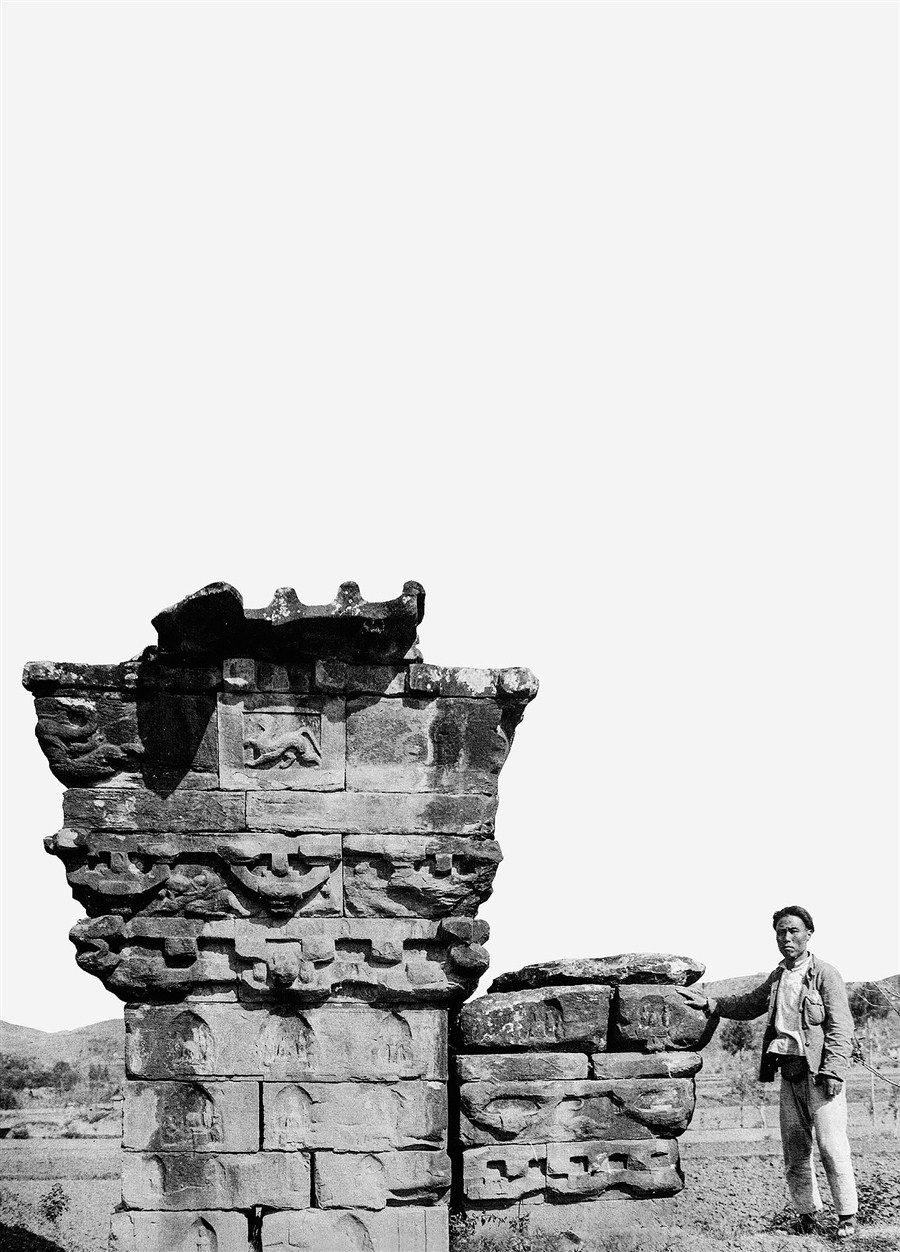
A photograph from the exhibition titled “French Sinologists in China.”
AS a part of Deke Erh’s “Silk Road Visual Documenta,” the exhibition titled “French Sinologists in China” recently opened on Shilong Road. It runs through April 5.
Erh is a Shanghai native and one of the nation’s most distinguished photographers. He became a legend for documenting the city’s history and tumultuous changes through photographs of architecture, city streets and people.
But for the past 17 years, Erh has been on the road, exploring sites along the historic Silk Road.
In the new exhibition, Erh is introducing Paul Pelliot (1978-1945), Emmanuel Edouard Chavannes (1865-1918), and Victor Segalen (1878-1919), three important sinologists.
“This is an academic exhibition,” he says. “Today even for many locals, their names are not familiar, but they should not be forgotten under the erosion of time. I am just unveiling these shining stars from history.”
Erh has earned his fame in photography, but now he’s determined to go deeper into his visual archives.
The exhibition not only showcases some related pictures, documentation, and books related to the three sinologists, but also a detailed overview for their background as well.
Paul Pelliot, the French sinologist and Orientalist is best known for his exploration of Central Asia and his discovery of many important Chinese texts among the Dunhuang manuscripts.
“At Dunhuang, Pelliot gained access to Abbot Wang’s secret chamber, which contained a massive hoard of medieval manuscripts. In fact, Stein had first seen the manuscripts in 1907, and had purchased a large number of them. But Stein had no knowledge of the Chinese language, and was unable to select which documents to purchase and take back to Britain,” Erh said. “Pelliot, on the other hand, was equipped with a solid base of classical Chinese and several Central Asian languages. He spent three weeks during April of 1908 selecting what he felt were the most valuable of these manuscripts.”
Like him, Emmanuel Edouard Chavannes was also a French sinologist and expert on Chinese history and religion. Edouard is best known for his translations of major segments of Sima Qian’s “Record of the Grand Historian,” the work’s first translation into a Western language.
Although he had only studied Chinese for five years, the quality and value of his early Chinese scholarship was widely recognized in the academic community, and convinced the regents at the College de France to give a position to him. He opened his tenure with a lecture entitled “On the Social Role of Chinese Literature.”
“He had many students in Europe that greatly spread and promoted sinology at that time,” Erh concluded.
The spotlight of the exhibition goes to several photos that Erh took at spots the trio once photographed, standing where they would have stood.
“It is rather a magical moment of collision, as if I meet history here,” he smiles.
One of the pictures features Erh lying beside a half-buried statue which had been discovered by Victor Segalan.
The French naval doctor Segalan came to China several times as a member of various archaeological expeditions. He studied ancient sculptural monuments in 1909-1917, and took a number of photographs published later in “Chine, La Grande statuaire.” He also wrote poems, essays and a novel about China, earning him the name “The French Chinese Poet.”
“But in 1919, he was found dead in a forest near Brest, with a copy of Shakespeare’s works opened to ‘Hamlet’ at his side,” Erh added. “Today under a new angle of globalization, sinology and Dunhuang have become very hot. I believe that on-going interest toward Chinese culture from around the world was actually initiated by Western sinologists like them.”
For the past two decades, Erh has been engaging himself in his “Silk Road” project, visiting nearly 850 historical spots along the route.
“Some of my books about them were hunted in old book markets both at home and abroad,” he said. “I did a lot of surveying and re-visited many archeological sites at that time.
“The workload is rather heavy, especially for an individual person. I hope to receive some support from some organizations in the future,” Erh said.
Date: Through April 5, 10am-4pm
(closed on Saturdays and Sundays)
Address: No. 27, 345 Shilong Rd
No comments:
Post a Comment